How to remove black carbon from inside and outside of a frying pan
A good hostess always has a clean frying pan. What if you got good quality dishes that were not well maintained? How to remove old carbon deposits inside and out?
How to clean the pan inside
The inner surface of the pan is cleaned by dissolving residues of fat and adhering food. Alkaline solutions prepared on the basis of soda ash or baking soda do this well.
Oily soft bloom
Thick fatty deposits are smeared with a paste made from soda and water. Some bloggers advise adding vinegar or citric acid to it. This will neutralize the soda, i.e. the product will lose its cleaning power. Therefore, acidic and alkaline solutions are best used separately.
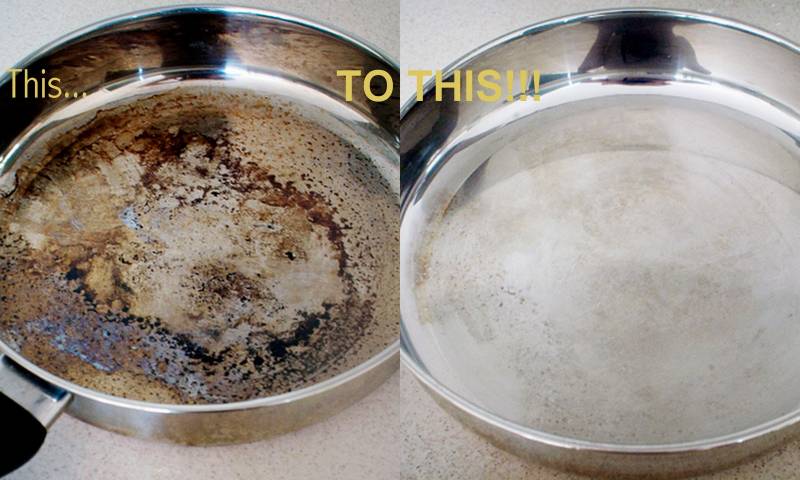
After the soda paste has been applied to the bottom and walls, you need to let it stand for 30-40 minutes, not allowing it to dry. To do this, you can wrap the pan in plastic wrap or a regular bag. After such a compress, the oily film is well removed with a regular foam rubber washcloth.
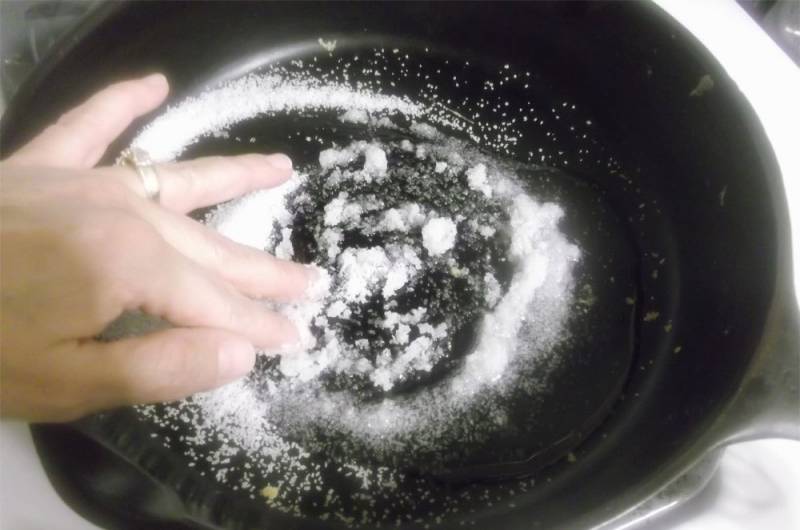
If the oily coating is thin and has not had time to turn into a dense mass, you can clean the dishes with dry absorbent powders. Suitable for this:
- dry soda;
- salt;
- crushed activated carbon;
- mustard.
They act as a sorbent, absorb fat and bind it securely. After sprinkling like this, the dishes can be easily cleaned with detergent and hot water.
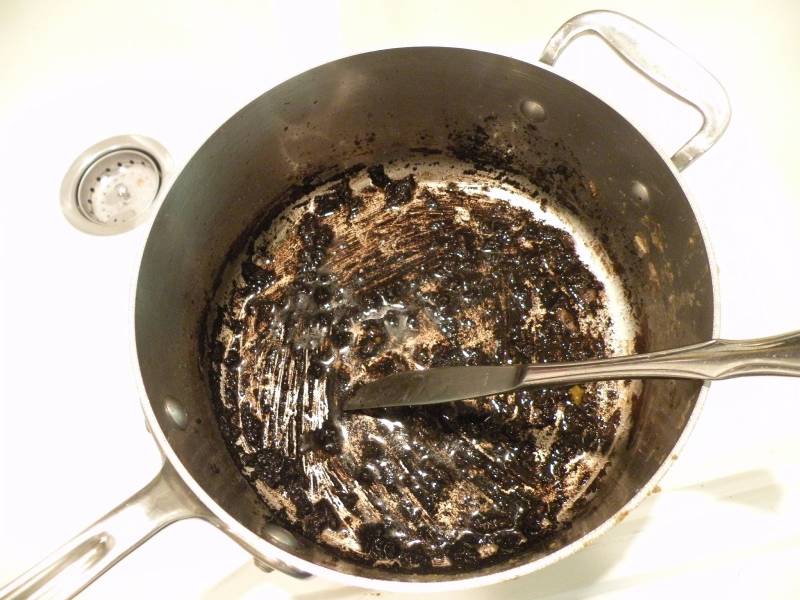
After frying fish or other products in breadcrumbs, hard-to-wash carbon remains on the bottom, containing particles of flour or rusks. To get rid of it, it is enough to wipe the pan with a paper napkin or rag so that the napkin material absorbs grease and removes carbon deposits.
Then you can use your usual dish detergent. The scrubber will not clog with grease, and everything will be washed off quickly and easily.
The sand absorbs fat well. It's affordable and cheap. It is enough to pour a layer of 2-3 cm on the bottom and ignite well over the fire. Then the sand can be thrown away or you can use it as an abrasive to clean the bottom from the outside.
Dried hard carbon deposits
A hard black film forms on all types of surfaces. Even on non-stick surfaces. It lays down on the walls of the pan from the outside and from the inside. It is more difficult to deal with it than soft pollution.
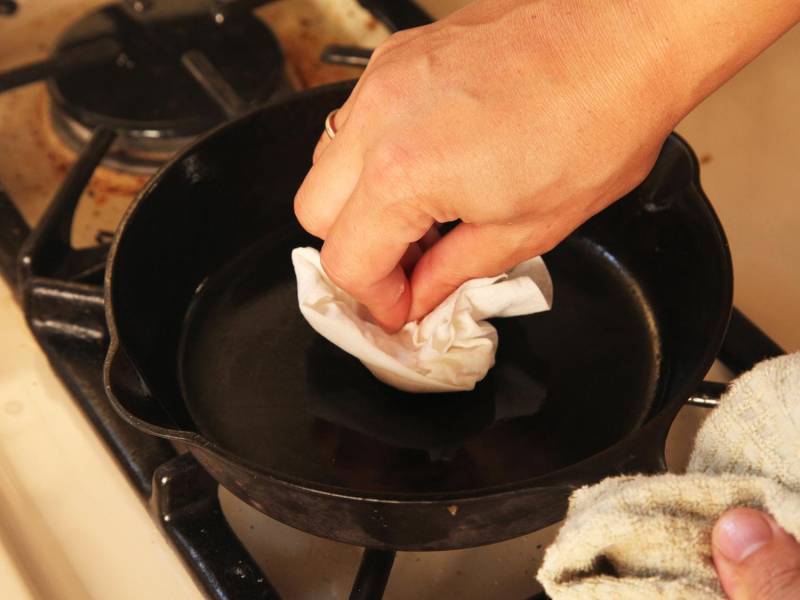
Apply a soda paste applique. On non-stick coatings, it handles this kind of contamination. After 30-40 minutes, clean the pan under hot water.
If that doesn't work, use an oven cleaner. They are designed to soften and dissolve carbon deposits. Be careful and protect your hands. Use gloves as the solution contains highly concentrated alkali.
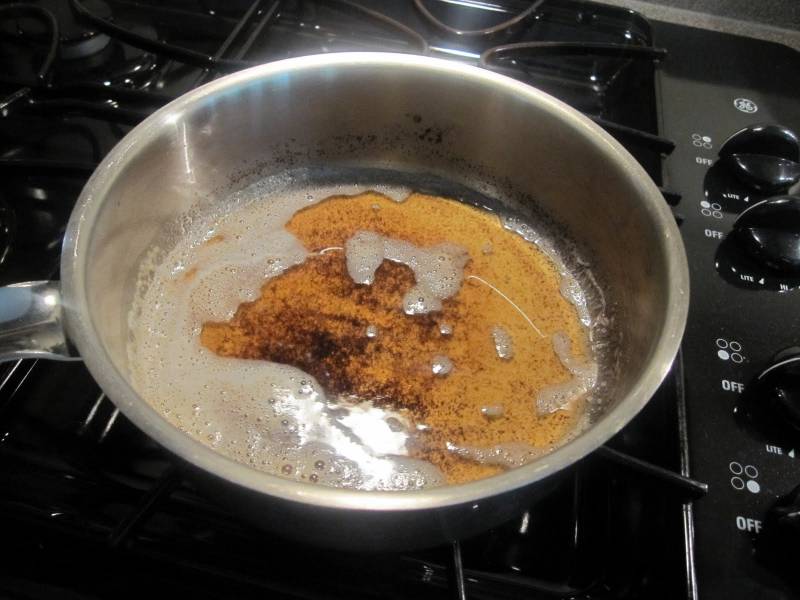
If for some reason you do not want to use modern household chemicals, pour water mixed with two glasses of vinegar into the dishes to the brim. Boil this solution directly in a skillet and let it cool slowly.
The acid helps dissolve mineral deposits. This is used by manufacturers of cleaners for kettles and plumbing.
Instead of vinegar, you can use a couple of packets of citric acid. Put it in boiling water in a pan. You will see a violent reaction. Let the solution boil for about 20 minutes and then cool slowly. In an acidic environment, hard deposits will separate from the bottom and sides of the cookware.
Attention! When boiling alkalis and acids, open the windows and turn on the hood! Inhalation of vapors can damage the mucous membrane of the respiratory tract!
How to clean the outside of a frying pan
The paint on the walls from the outside is very delicate. If you use a metal washcloth when cleaning, then ugly scratches will appear, and the dishes will lose their original appearance.
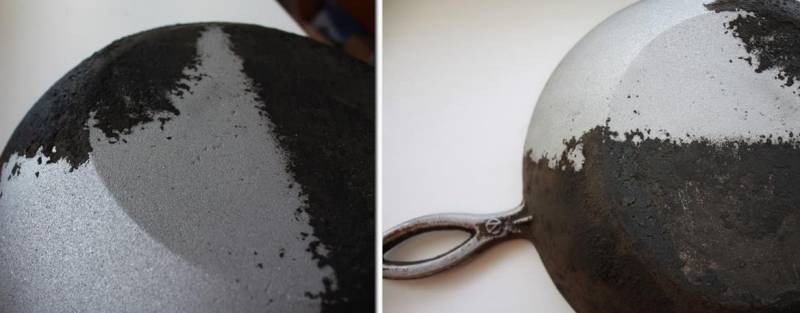
In order to restore the radiant purity, it is enough to lubricate the surface with a mixture of mustard, ammonia and water. It is an excellent mixture of mild natural abrasive and alkali.
If the dishes are running and paint two are visible from under the carbon layer, then try using an oven detergent. If it turned out to be powerless, then take out a bigger basin or a pan of sufficient diameter so that you can put a frying pan in it and fill it with water.
Pour 10 liters into the prepared container. water and add 2 glasses of grated laundry soap, the same amount of soda ash (you can use regular baking soda, but you will need 6 glasses) and 200 ml of liquid stationery glue. Immerse the pan in the prepared solution and boil for 2-3 hours. Better to do it on the street. If this is not possible, then open all windows. Arrange a draft and turn on the hood. Protect the lungs and bronchi.
After such a bath, most of the dirt will go away on its own. Residues can be cleaned off with a soft brush and washcloth.
Bottom
You can resort to digestion. In this case, the handles will also be cleaned. If this is not possible, then you can simply put the pan on top of the pan, into which 1 liter of water is poured and 1 glass of soda is poured. Boil water. Let the frying pan sit on the steam bath for 30-40 minutes and scrub with a steel wool scrubber and a sponge.
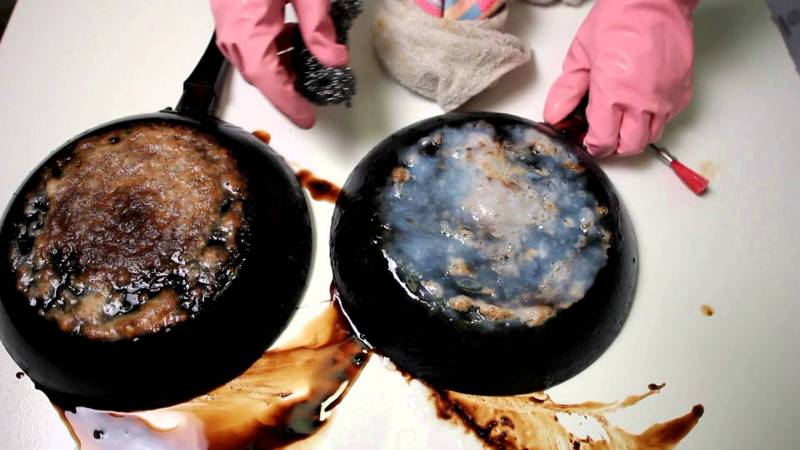
If the situation is neglected and the carbon deposits are not removed in the usual way, you can resort to a last resort.
Heat the bottom of the skillet over a fire. The metal expands faster than carbon deposits. When hot, the burn will become brittle and can be scraped off with a knife or metal brush.
Aluminum tends to deform easily when heated unevenly. So don't overdo it. This method is good for cast iron and steel pans.
When the pan has nothing to lose, you can turn to contactless car wash products. Look for solutions for removing soot and residues of oils, bitumen and other contaminants similar in properties to soot and grease.
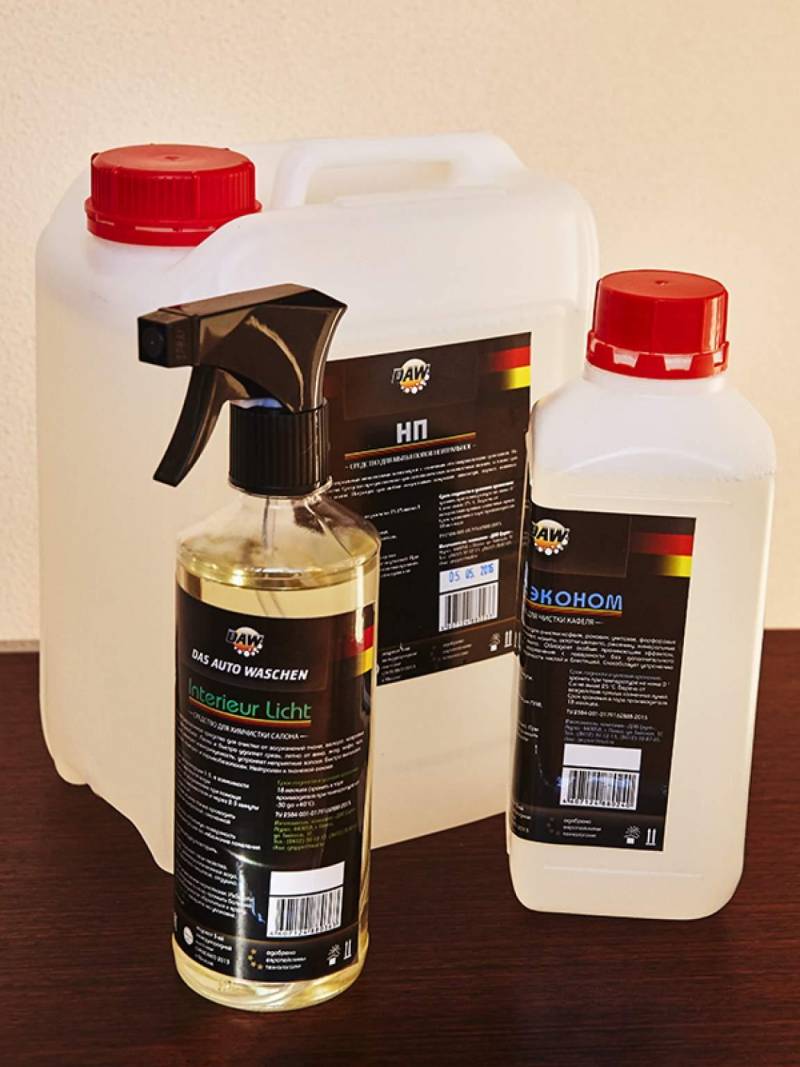
By the way, the black film is formed at the bottom not only from oil droplets. Quite often, the mobile appears as a result of the combustion of low-quality gas. Or when the channels of the burners are clogged, causing them to smoke. In this case, it is possible to restore the cleanliness of the surface with the help of soot removers.
Attention! After using strong chemical solutions, the dishes must be thoroughly rinsed. You can boil it for an hour to completely remove the remaining detergent.
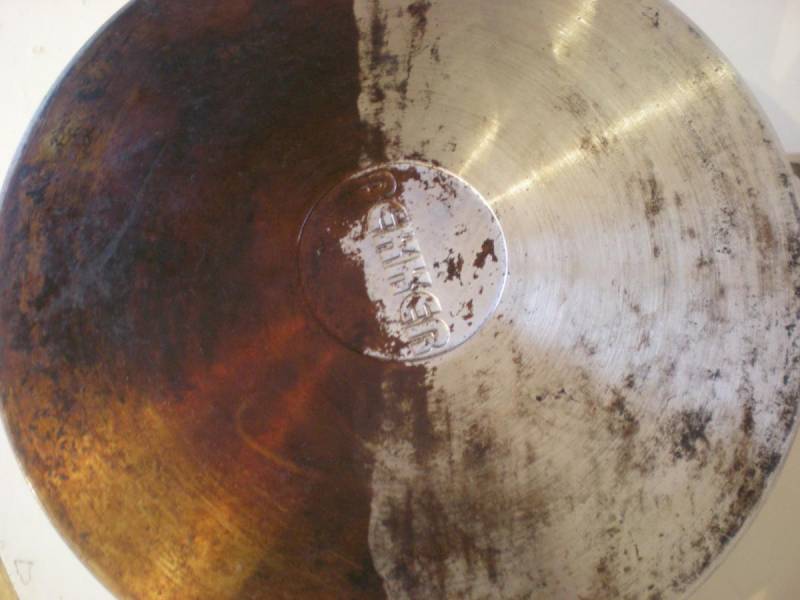
Sandblasting will help bring down any dirt and, if necessary, polish the surface. A metal brush attached to a drill will have the same effect.
Attention! Under mechanical stress, hard brushes, karcher and sandblasting can damage the paint and the protective anti-primer coating.
As you can see, you can return the dishes to a clean and beautiful look. If you wash it in time after each use, then the dirt will be removed easily using ordinary dishwashing detergents.
Video: How to clean a frying pan without chemicals
Oct 9, 2017 Werri

